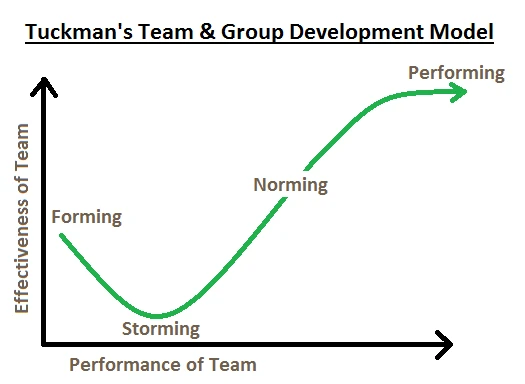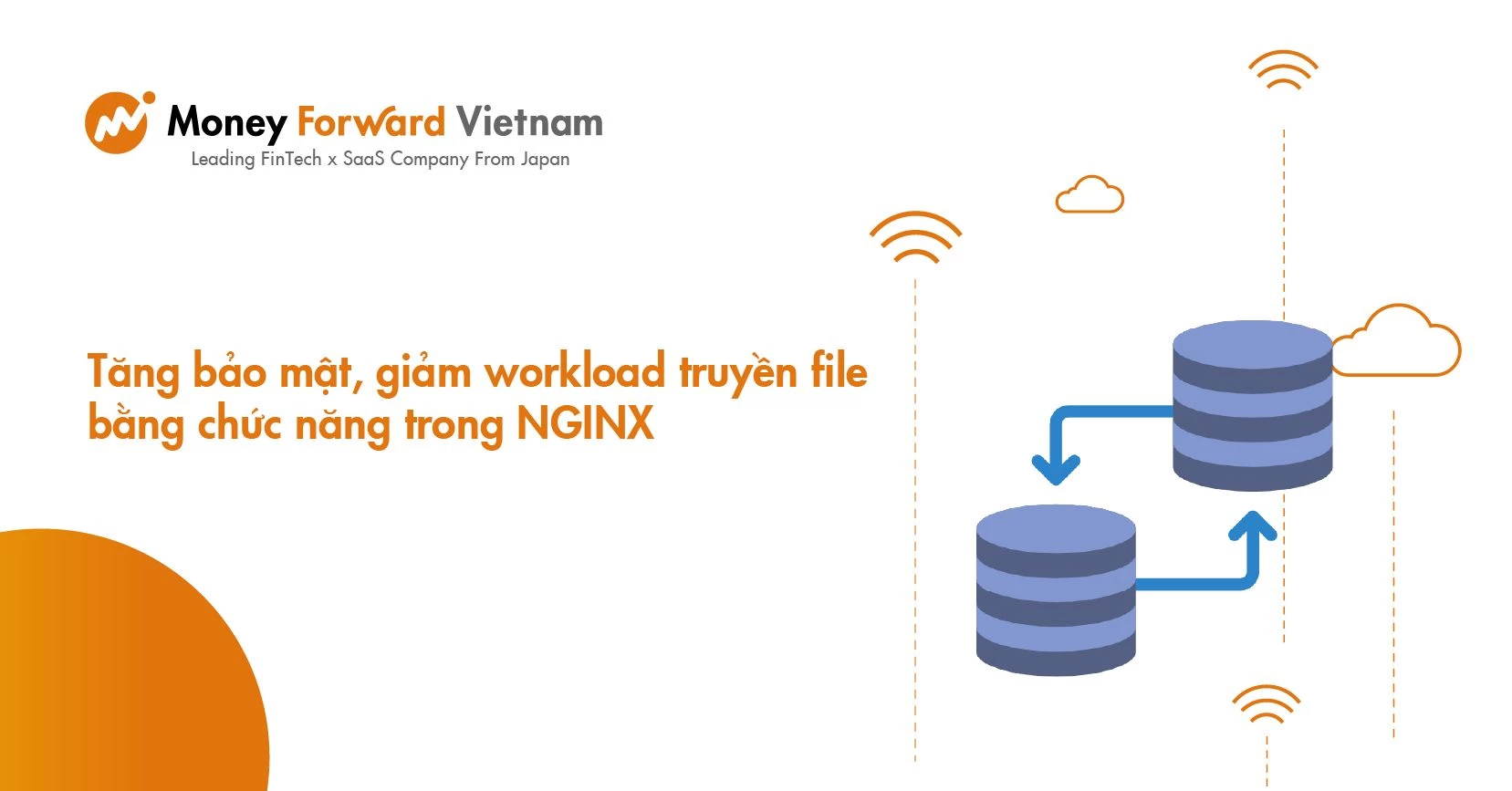

Life cycle of a Scrum team and lessons learned

1. Introduction
In the dynamic world of Agile development, the success of a Scrum team hinges not only on technical capability but also on the ability to work cohesively as a unit. Understanding the stages of team development is crucial for fostering a productive and harmonious working environment. This is where Tuckman's Team and Group Development Model, a well-established psychological framework, becomes invaluable.
Originally proposed by Bruce Tuckman in 1965, this model outlines the stages that teams typically go through as they form and evolve. The stages—Forming, Storming, Norming, Performing, and Adjourning—provide a roadmap for understanding team dynamics and guiding teams through the inevitable challenges of collaboration.
Tuckman came up with this idea to describe the path that teams follow on their way to high performance.

We do not include the Adjourning stage in the figure because it does not pertain to the development aspect. However, it is crucial to understand this stage clearly in order to avoid it.
2. Stages and its characteristic
2.1 Forming
This is the first stage of a team. When a new team forms, individuals will be unsure of the team's purpose, how they fit in, and whether they'll work well with one another. They may be anxious, curious, or excited to get going. However they feel, they'll be looking to the team leader for direction. Curiosity and excitement is a positive reaction that could help forming the team faster while anxiety may be a hindrance.
How to detect:
When team members are strangers to each other, interaction is low, when the project just started.
When there are structural, disruptive changes to an existing team.
When many new members added to the existing team.
What should we do:
Team leaders should define clearly the working process, roles & corresponding scope of work to remove anxiety. The working process should follow organization standards as minimum, if any.
Leaders should define a clear vision and roadmap, as detail as possible so all members can have good psychology & knowledge preparation
Leaders should also define team objectives and help members to define their personal goals which contribute to the team's common objective. Starting a new project can present numerous obstacles and may cause frustration among team members, so it's important not to set expectations too high.
Leaders should pay more attention to help members get to know each other, improve daily interaction & build trust between members.
2.2 Storming
In the storming stage, people start to push against the established boundaries. Conflict or friction can also arise between team members as their true characters, their preferred ways of working surface and clash with other people's. At this stage team members may challenge your authority or management style, or even the team's mission. If those conflicts are not resolved or partly resolved, there might be confrontations or accumulated conflicts that cause productivity to suffer.
How to detect:
There are multiple discussions, debates or ideas about responsibility or process.
Productivity fluctuate
What should we do:
Storming can make or break a team, so it's essential that we establish processes to track the progress and success of tasks. We need to be sensitive to each conflict and try to resolve it completely. Any simmering conflict, friction or annoyance can grow and break the team.
Create a safe environment for everyone to raise ideas, put it into practice without the fear of responsibility. Create a supportive environment when everyone does not hesitate to call for help when facing difficulties.
Help quieter team members to have their say, to avoid louder individuals dominating face-to-face or team meetings. Ask for and hear everyone's point of view.
What are risks:
The Storming stage is characterized by conflict, competition, and the struggle for power and control within the team. This stage is crucial for the team's development, but it also comes with several risks that can impact the team's progress and cohesion
Conflict Escalation: Disagreements and conflicts can escalate if not managed properly, leading to a toxic work environment. Prolonged conflicts can damage relationships, reduce trust, and hinder collaboration.
Reduced Productivity: The focus on resolving conflicts and power struggles can divert attention from project tasks. This can lead to missed deadlines, reduced quality of work, and overall lower productivity. Lack of direction and misalignment with the project's goals and deliverables can be other risks as well.
Low Morale: Persistent conflicts and unresolved issues can lead to frustration and demotivation among team members. Low morale can result in decreased engagement, higher absenteeism, and even turnover.
Formation of Cliques: Team members may form sub-groups or cliques, leading to a divided team. This division can create an "us vs. them" mentality, further exacerbating conflicts and reducing team cohesion.
Resistance to Leadership: Team members may challenge the authority and decisions of the team leader or Scrum Master. This can undermine the leader's ability to guide the team effectively and maintain order.
Miscommunication: Increased tension can lead to poor communication and misunderstandings. Miscommunication can result in errors, duplicated efforts, and a lack of alignment on goals and tasks.
Decision-Making Paralysis: Conflicts and differing opinions can lead to indecision and an inability to reach consensus. This can stall progress and delay important decisions, affecting the project's timeline.
Emotional Stress: The stress of navigating conflicts and power struggles can take an emotional toll on team members. Emotional stress can affect mental health, leading to burnout and decreased overall well-being.
What are mitigation actions:
Facilitate Open Communication: Encourage open and honest communication to address conflicts early and constructively.
Set Clear Roles and Responsibilities: Define roles and responsibilities clearly to reduce power struggles and confusion.
Promote Team-Building Activities: Engage in team-building activities to strengthen relationships and build trust.
Provide Conflict Resolution Training: Equip team members with conflict resolution skills to handle disagreements effectively.
Maintain a Positive Environment: Foster a positive and inclusive team culture to keep morale high.
Monitor Team Dynamics: Keep a close eye on team dynamics and intervene when necessary to prevent conflicts from escalating.
2.3 Norming
When the team moves into the norming stage, people start to resolve their differences, appreciate one another's strengths, and respect your authority as a leader.
How to detect:
Everyone knows one another better, they will feel more comfortable asking for help and offering constructive feedback.
They'll share a stronger commitment to the team's goals, and they should make good progress toward it.
What should we do:
Get your team to bond further with face-to-face or team-building exercises. These social connections are especially important right now, as more of us work from home. So, keep them up through the norming period and beyond.
Maintain regular 1-on-1 to encourage individuals to step back, review their goals, and take responsibility for them.
What are risks:
While the Norming stage is generally more stable and productive compared to the Storming stage, it still comes with its own set of risks.
Complacency: Team members may become complacent, assuming that the team is functioning well and that no further improvements are needed. This can lead to a lack of innovation, reduced motivation, and stagnation in performance.
Groupthink: The desire for harmony and consensus can lead to groupthink, where critical thinking and dissenting opinions are suppressed. This can result in poor decision-making, as alternative viewpoints and potential risks are not adequately considered.
Over-Reliance on Established Norms: The team may become too rigid in adhering to established norms and processes, resisting necessary changes or adaptations. This can hinder the team's ability to respond to new challenges or opportunities effectively.
Underestimation of External Threats: The team may become inward-focused, underestimating or ignoring external threats and changes in the project environment. This can lead to a lack of preparedness for external challenges, such as market shifts, stakeholder changes, or new technological developments.
Uneven Participation: Some team members may dominate discussions and decision-making, while others may become passive or disengaged. This can lead to an imbalance in contributions, with valuable insights and skills from quieter team members being overlooked.
Hidden Conflicts: Conflicts may still exist but remain hidden or unaddressed due to the team's focus on maintaining harmony. Unresolved conflicts can resurface later, potentially disrupting team cohesion and performance.
Dependency on Leadership: The team may become overly dependent on the leader or Scrum Master for direction and decision-making. This can limit the team's autonomy and ability to self-organize, which is crucial for Agile teams.
Inadequate Skill Development: The team may neglect ongoing skill development and learning, assuming that current competencies are sufficient. This can result in skill gaps and a lack of readiness for future challenges or project requirements.
What are mitigation actions:
Encourage Continuous Improvement: Foster a culture of continuous improvement by regularly reviewing and refining team processes and practices.
Promote Open Dialogue: Encourage open and honest communication to ensure that all team members feel comfortable sharing their ideas and concerns.
Facilitate Diverse Perspectives: Actively seek out and value diverse perspectives to prevent groupthink and enhance decision-making.
Monitor Team Dynamics: Keep an eye on team dynamics to identify and address any hidden conflicts or imbalances in participation.
Support Skill Development: Provide opportunities for ongoing learning and skill development to ensure the team remains adaptable and capable.
Empower the Team: Encourage the team to take ownership of their work and make decisions collectively, reducing dependency on leadership.
2.4 Performing
Now your team is in flow and performing to its full potential. With hard work and structured processes, the team is likely to achieve its goals efficiently. Roles on the team may have become more fluid, with members taking on various roles and responsibilities as needed. Differences among members are appreciated and used to enhance the team's performance.
How to detect:
Team's productivity is stable at a high level, planning and forecasting action is done with high precision.
There are less ideas or debate about the team's process because members respect each other and the process itself.
What should we do:
Try to spend time on other goals and new areas to benefit the business. Free up more time for yourself and boost team engagement by delegating tasks.
Make time for the group's personal development. Discuss with your team what opportunities and resources are available to them.
Important: Keep up the team at this stage because it can be rolled back to the previous stage.
What are risks:
In the Performing stage, the team operates smoothly, with members working together effectively to achieve their goals. However, even in this advanced stage of team development, certain risks can still arise that may impact the team's performance and sustainability.
Burnout: High levels of productivity and sustained effort can lead to burnout among team members. Burnout can result in decreased morale, increased absenteeism, and higher turnover rates.
Overconfidence: The team may become overconfident in their abilities, leading to underestimation of risks and challenges. Overconfidence can result in poor decision-making and a lack of preparedness for unexpected issues.
Neglecting Continuous Improvement: The team may neglect continuous improvement practices, assuming that their current processes are optimal. This can lead to missed opportunities for further enhancement and adaptation to changing circumstances.
Dependency on Key Individuals: The team may become overly reliant on certain key individuals for critical tasks and decision-making. This can create bottlenecks and vulnerabilities if those individuals are unavailable or leave the team.
External Disruptions: External factors such as changes in project scope, stakeholder expectations, or market conditions can disrupt the team's performance. External disruptions can lead to a loss of focus, misalignment with goals, and decreased productivity.
Team Dynamics Shifts: Changes in team composition, such as the addition of new members or the departure of existing ones, can alter team dynamics. Shifts in team dynamics can affect cohesion, communication, and overall performance.
Inadequate Knowledge Sharing: The team may not prioritize knowledge sharing, leading to information silos and a lack of collective understanding. Inadequate knowledge sharing can hinder collaboration and the team's ability to respond to challenges effectively.
3. Key takeaway
Doing the right thing at the right time:
Identify the stage that your team is at from the descriptions above.
Consider what you need to do to move on to the next stage.
Schedule regular reviews of where your team is at, and adjust your behavior and leadership approach accordingly.
This model isn't a one-way street, teams may go back and forth between stages. Keep observing your team's progress to make sure it doesn't slip back and do the right things to go forward.
4. Personal thought
Tuckman's model has been instrumental in the development and success of the Send Cloud Invoice team, guiding us from a small group to a robust organization of 23 members now operating as two independent Scale Scrum teams. By identifying hidden conflicts and overcoming leadership challenges, the model has enhanced our team's performance, stabilized our working processes, and improved communication and relationship. While future challenges are inevitable, we are confident in our ability to thrive and advance to the next stage of growth.


Implementing Domain Driven Design

